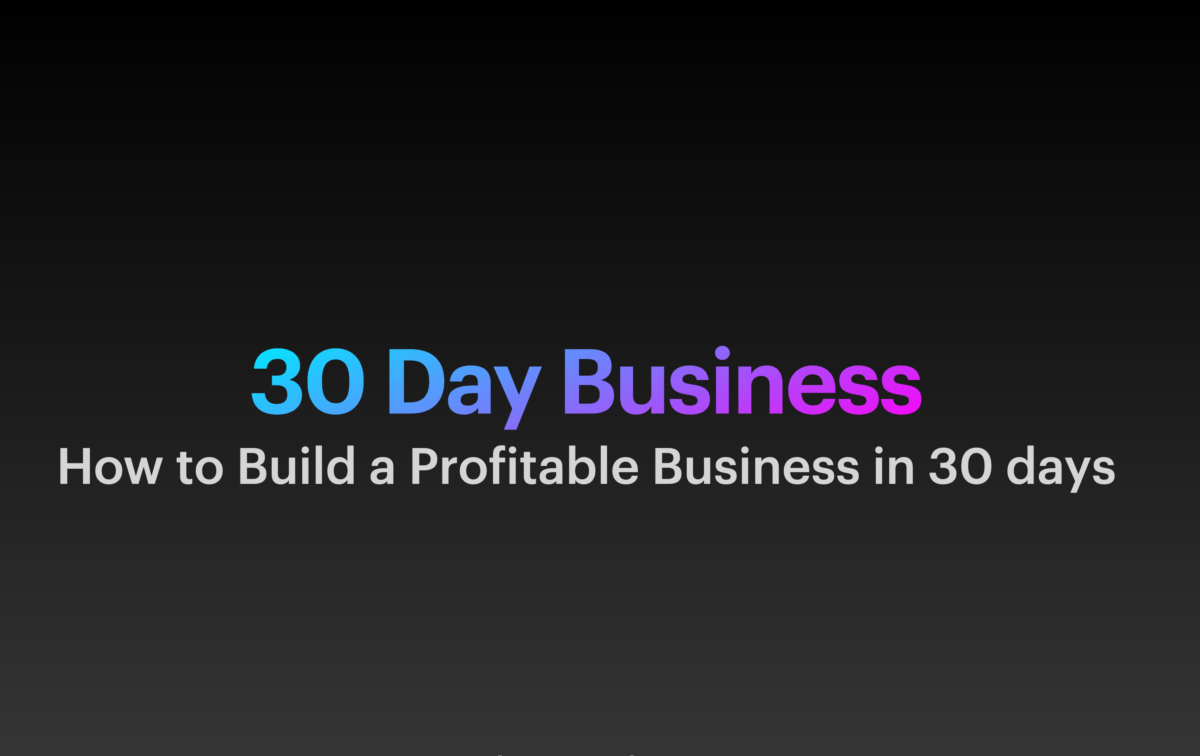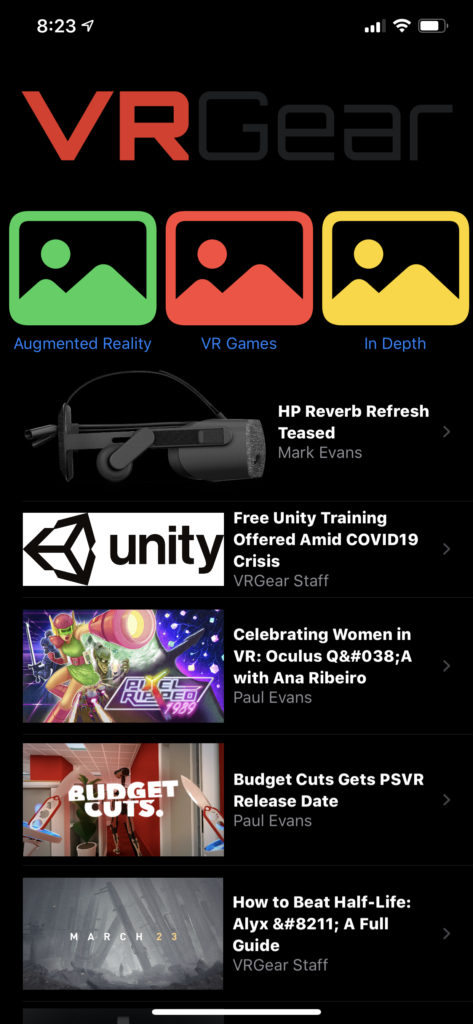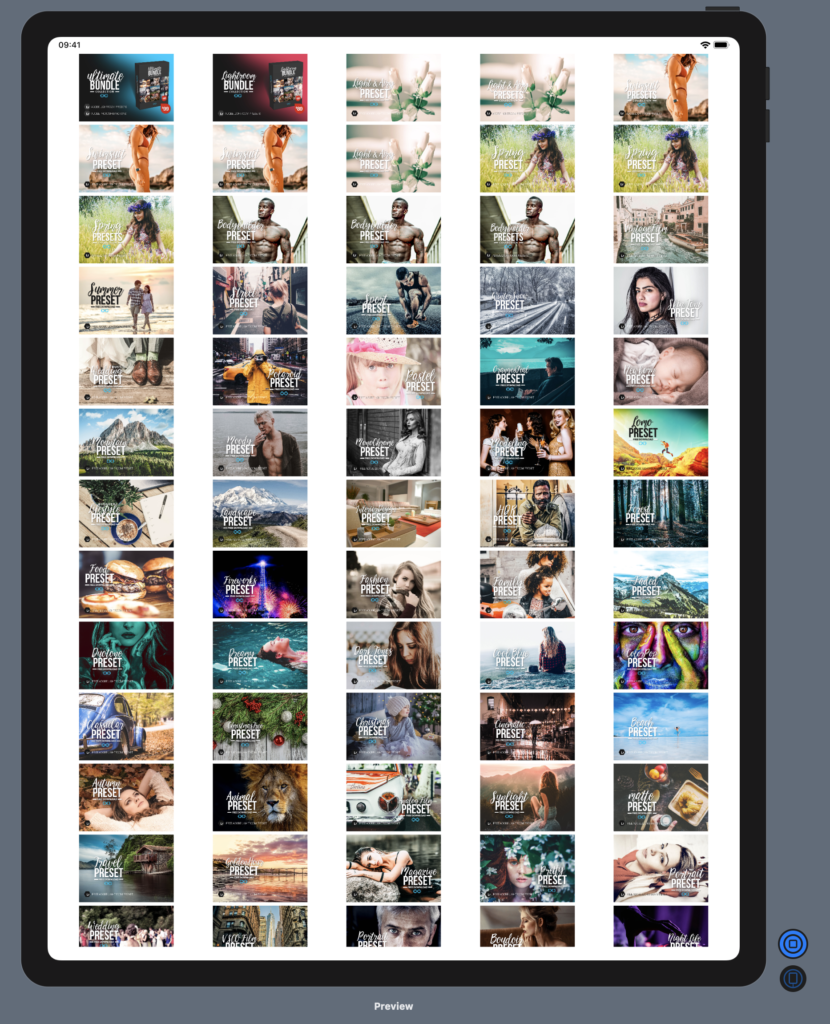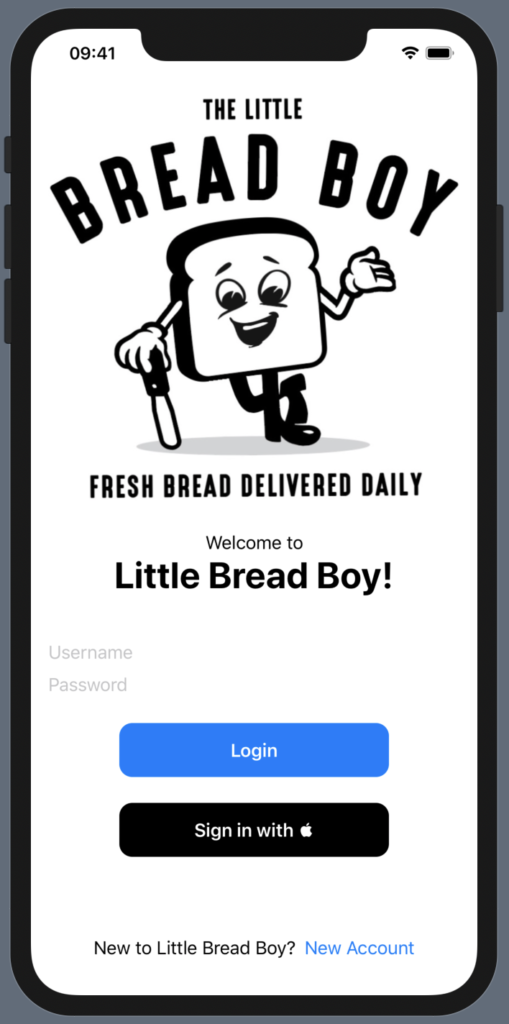Tomorrow is the beginning of “The 30 Day Business: Building a Business and Achieving Profitability in 30 Days”. There are a lot of balls in the air right now, so forgive me if something is missing from this list. Feel free to reach out if you have any questions!
To make sure I get the most out of the next 30 days, I’ve created an outline for the month – a rough outline is included in my previous post here. Come prepared tomorrow with your best ideas. The primary purpose of tomorrow is to narrow down your best ideas to your top 5. These 5 ideas will then be run through another filtering process that will yield your golden opportunity.
Below I’ve included some instructions on what you should have prepared if you would like to follow along for the ride!
1. Have a Place to Document Your Progress
Write this stuff down! Document every thought, question, and inspiring idea that comes to your head during this time!
Make sure you have a reliable place to capture your writings. A digital writing tool is best. Even better is one that works on your desktop, laptop, tablet, and mobile phone. You’ll need a reliable and easy-to-access writing tool because it’s how you’ll be keeping track of your progress as you make your way through the 30 Days.
I’ll be using this website as I make my way through. I’ll also be recording with audio/video (YouTube and Podcasts). Those two additional outlets aren’t required, and a website isn’t necessarily required either. But you definitely will want to have a designated place that you can record and store all the thoughts, activities, action items, and content that you’ll produce during the 30 Days.
Some good places to document and keep things available wherever you might include: iCloud Drive (for iPhone/Mac/iPad/Web), Dropbox, Google Drive, Box. And if you want to publish what you’re writing out on the internet like I’m doing, some good options there include WordPress, Wix, Medium, or you can use social media sites like LinkedIn or Facebook. For smaller pieces of content, you can leverage Instagram or twitter. But you shouldn’t have Instagram or twitter be the primary place where you do your publishing.
2. Block off Time Every Day
We aren’t jumping headfirst into something that you can set-and-forget… just like you wouldn’t consider yourself ‘done’ after diving headfirst into a body of water. We’re diving head-first and then we’re going to swim as hard as we can! So, hold on to your hats and plan to stay focused for the full 30 days.
You’ll need anywhere between 1 – 5 hours a day to complete the action items for the day. Sometimes it might be less, and somedays it might be more. But, keep in mind that the work to be done isn’t busywork. You aren’t trying to fill the time. If you can complete a section of work quickly, you should absolutely complete it quickly! These 30 Days are all about accomplishing each step of the process and understanding the reasoning behind it (at whatever speed), and then taking the next step to get closer to your goal!
3. Plan on Messing up – Often, and A Lot!
If you are building a business for the first time or if you are adding a new product line to a business that you already have, you are going to mess up in the next 30 days – big time! Before you take the first step, tell yourself that you are going to fall somewhere along the path. How hard you fall, or how long you stay down, is totally up to you!
Many of the concepts will be new, some of them you may have heard before – but the order of each princpple and action item was intentional. The 30 Day Business plan isn’t 30 random ideas or business concepts that I want to write about over the course of a month. They re actually the exact steps anyone needs to take to discover, validate, build, sell, and profit from a business idea or product.
4. Lean on Your Support Structure
Making sure you have support as you embark one something new is crucial if you expect to have the endurance necessary to make it to the end. Notice I didn’t say support system. The reason I didn’t use the word system is because systems need input to continue to work – and typically the systems around you expect input from YOU to continue to work. Which means if you stop working because of discouragement, fatigue, or some other external force, your system no longer has input to continue to work.
A support structure is a framework that you create around yourself to hold you up when you are too weak. Something that give shape and reliable form to your efforts when you feel like you’ve lost your drive or motivation. A structure looks more like a steal-framed building than a soft, warm, and comfortable bead.
You want Support Structures that will get you to the end of the 30 days (and beyond).
Depending on what works best for you, a support structure has the following attributes: as reliable as death and taxes, doesn’t yield to your whining or complaining, is irritatingly optimistic, and is eager to solve problems instead of identify them.
This your support structure could be a person, a set of daily habits, a series of quotes, a playlist of songs, a motivational YouTube video, or a book. Whatever structure you lean on to give you confidence to stand and move forward – bring that with you for the next 30 days!
The Next Level
If you want to do more than document your 30-day journey with text, here are a few additional tools. These can be used to publish video and audio each day, along with your text-based content. I’ll share with you what software and hardware I’m going to be using, but you can use whatever you’re comfortable with. This section was called “The Next Level” for a reason.
Video
Inspired by gamers who stream on Twitch, Youtube, and Mixer (RIP Mixer), I use a software called OBS Studio – which stands for Open Broadcast Software.
OBS Studio is “a free and open-source video recording and live streaming software.” OBS helps you organize content streams so you can capture them together for a single output. So, in practice this allows you to capture your computer screen, FaceTime camera, your web browser, and even cameras that you connect to your computer, including an iPhone or iPad.
I don’t recommend going out and spending a ton of money on recording equipment. I’ve gone down that road and purchased some of the best video and audio equipment only to default back to using what is easiest, which is my iPhone, MacBook, and iPad. The iPhone camera is crazy good. If you have an iPhone that was released in the last ~3 years, you’re able to record at 4k 60fps. And for reference, virtually nobody watches internet video at 4k 60fps. Most video is played back 720p 30fps on mobile devices, or 1080p for people viewing on a desktop computer with high bandwidth internet. So, unless you’re trying to get into cinematography… well, even then the iPhone camera on the latest model proves to be a good option… The point is, your iPhone camera is more than ok. If anything, it’s over-qualified for the job.
There are only 2 items that you might need to spend money on. One of the items you will want to invest in is some kind of tripod/iPhone mount that can hold your iPhone at eye level while you record. While it is popular to record yourself while holding your phone in your hand – selfie-style – people can only take so much of that type of content before they switch off the video. A rule of thumb for hand-held selfie video is to restrict the clip so a single thought. If you feel like you are going to make several points and the video needs to be longer; drop your iPhone on the tripod and speak into it like you’re talking to a friend.
Video Editing Software
The amount of free video software out there is staggering. The amount of paid video software out there is equally staggering. For now, stick with the free options. And stick with the ones that you know. On a Mac, that’s iMove. If you’re on iPhone or iPad, there are free versions of iMove there as well. You really don’t need sophisticated video editing software.
Audio Hardware
You’ve probably seen popular podcasters wearing big over-ear headphones talking into microphones that extend from a metal arm. Unless you have a soundproof place to record, that kind of setup will actually give you worse results than if you used something cheaper and simpler.
To make things easy, you only need your iPhone, iPad, or Mac to record audio. Specifically in that order. The iPhone and iPad don’t have fans, so there isn’t any noise introduced to the recording. The MacBook gets very warm when recording audio, so the fans turn on and create noise that might be bad enough to warrant post-production filters to remove the fan noise. On a larger computer like the iMac or Mac Pro (🤤) the heat is handled by the design before the fans kick in really loud. I personally find the iPad to be a perfect tool for audio recording. And the software I like to use for Podcasting works fantastic on iPad and iPhone.
If you do end up using your iPhone or iPad, I would recommend removing any cases or coverings that you might have on them, and then resting the device on a flat surface. Record a few different audio clips to see how far away you should be from the device when recording.
If you are using your iPhone for video and Audio, you’ll still have great audio results. The goal is to avoid creating longer audio content when holding the device in your hands. We all know how awful it sounds when someone rubs their cheek or finger over a microphone. Let’s avoid that! So, hands-off the device when you’re recording!
Audio Software
Start simple with an all-in-one recording solution that lets you record, edit, and publish to 8+ podcasting platforms.
Sound too good to be true? Well, did I mention that this solution is 100% free, forever, no in-app-purchase, no monthly fee, nothing!
Anchor is a Web and Mobile App that does all of this. It’s quite amazing.
Plus, inviting people to be on your podcast is made super simple as well! You can add people to your podcast recordings by simply texting them an invite. They open the invite and they are added to your podcast as a guest that you can interview! It really is a fantastic all-in-one solution that I don’t think I’ll be growing out of any time soon!
If you feel you must record with higher-end gear, and really feel like using fancy software, you can always upload whatever masterpiece you’ve created to your Anchor account and you’ll still get the benefits of automatic publishing to all podcast networks.
Marketing Software
We are going to be diving deep into this area very soon. There are some entry-level tools out there that are free, and we’ll stick with those as long as we can.
SEO Software
Arguably SEO software could fall under the marketing software heading, but I want to separate the two because marketing involves much more than just optimizing your website. SEO on the other hand specifically is about optimizing your website to help you get notice by the search engines and drive traffic.
We are going to be diving deep into SEO software as well during the 30 days, do I’ll leave the deep dive for another day.




